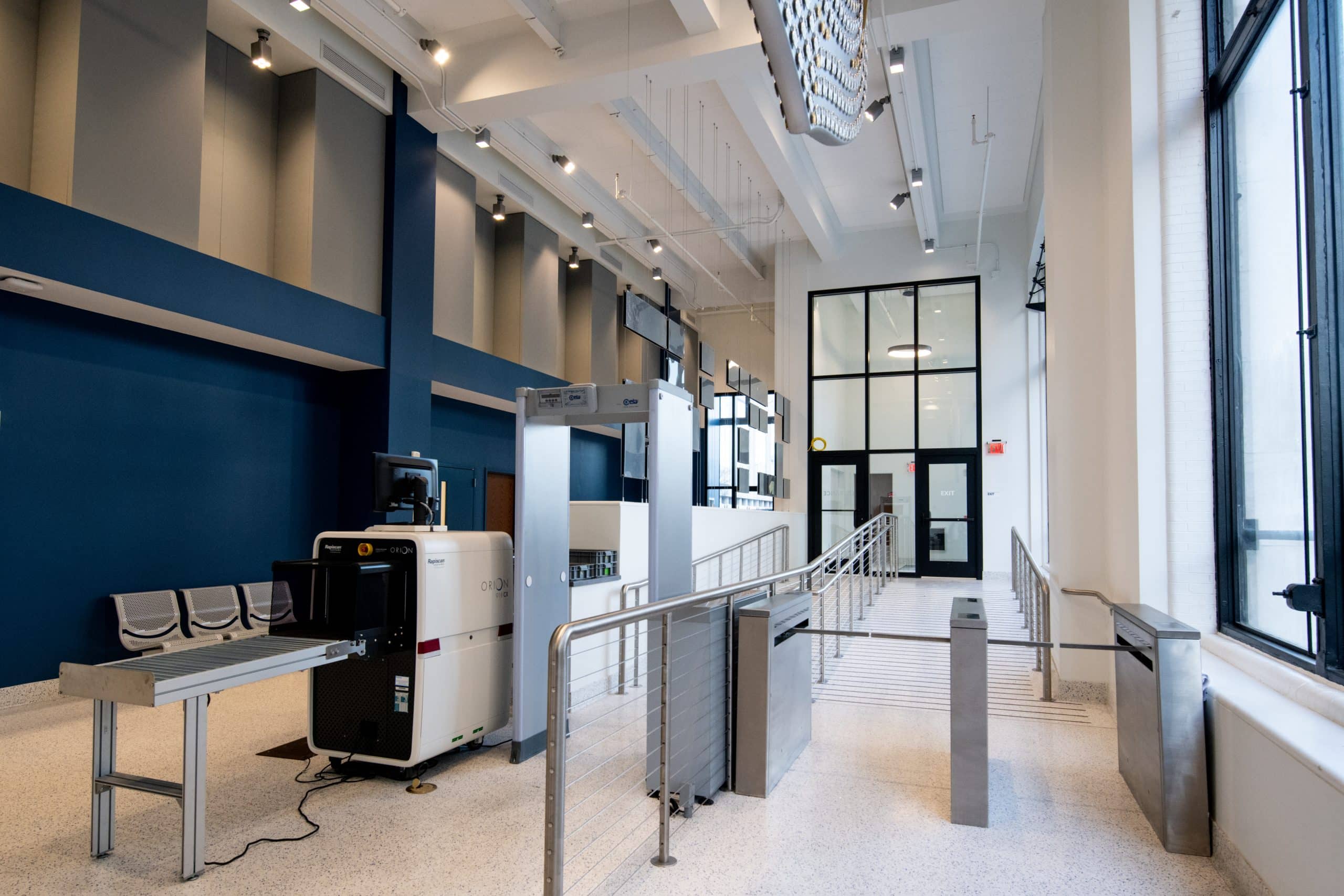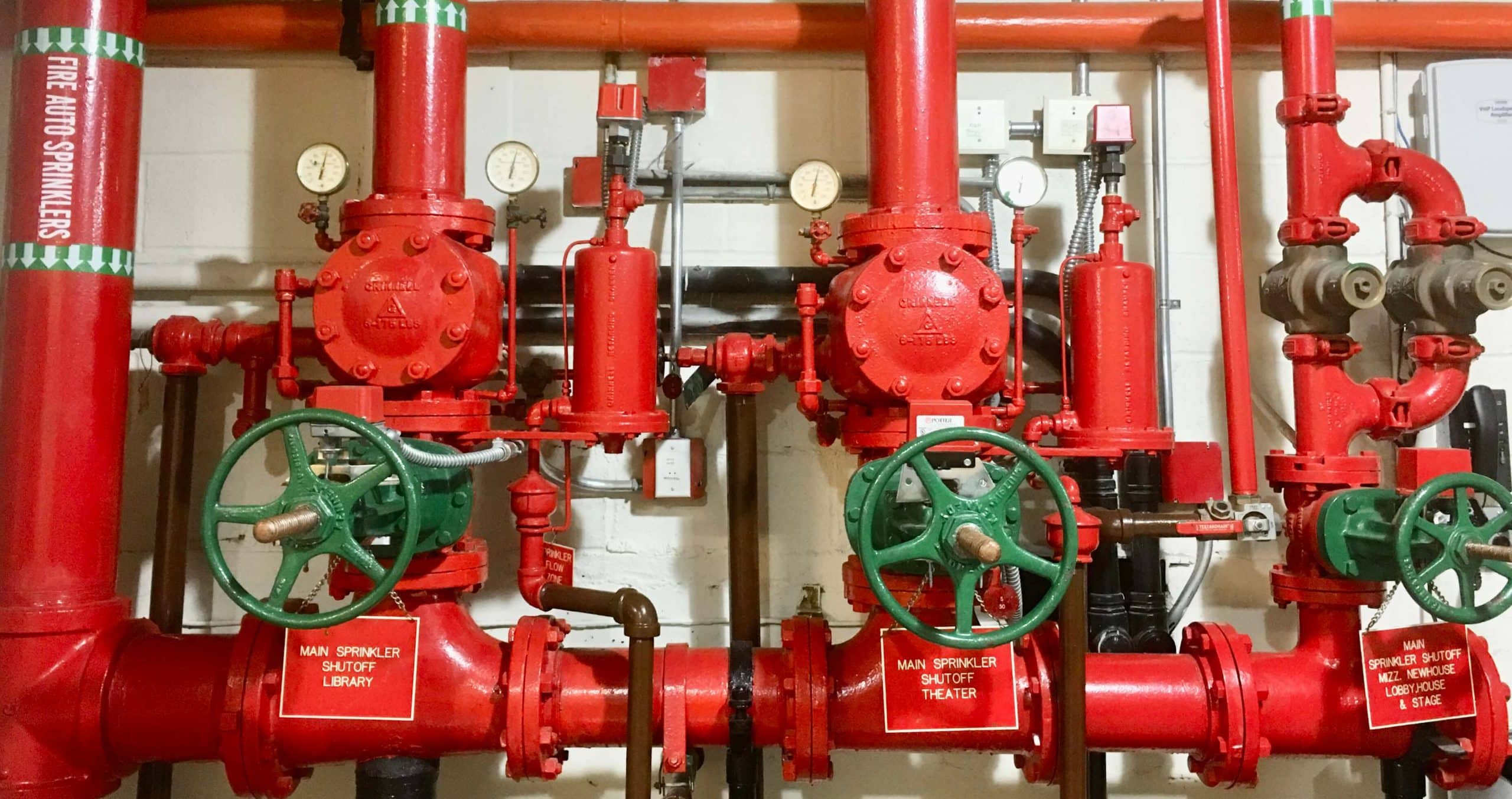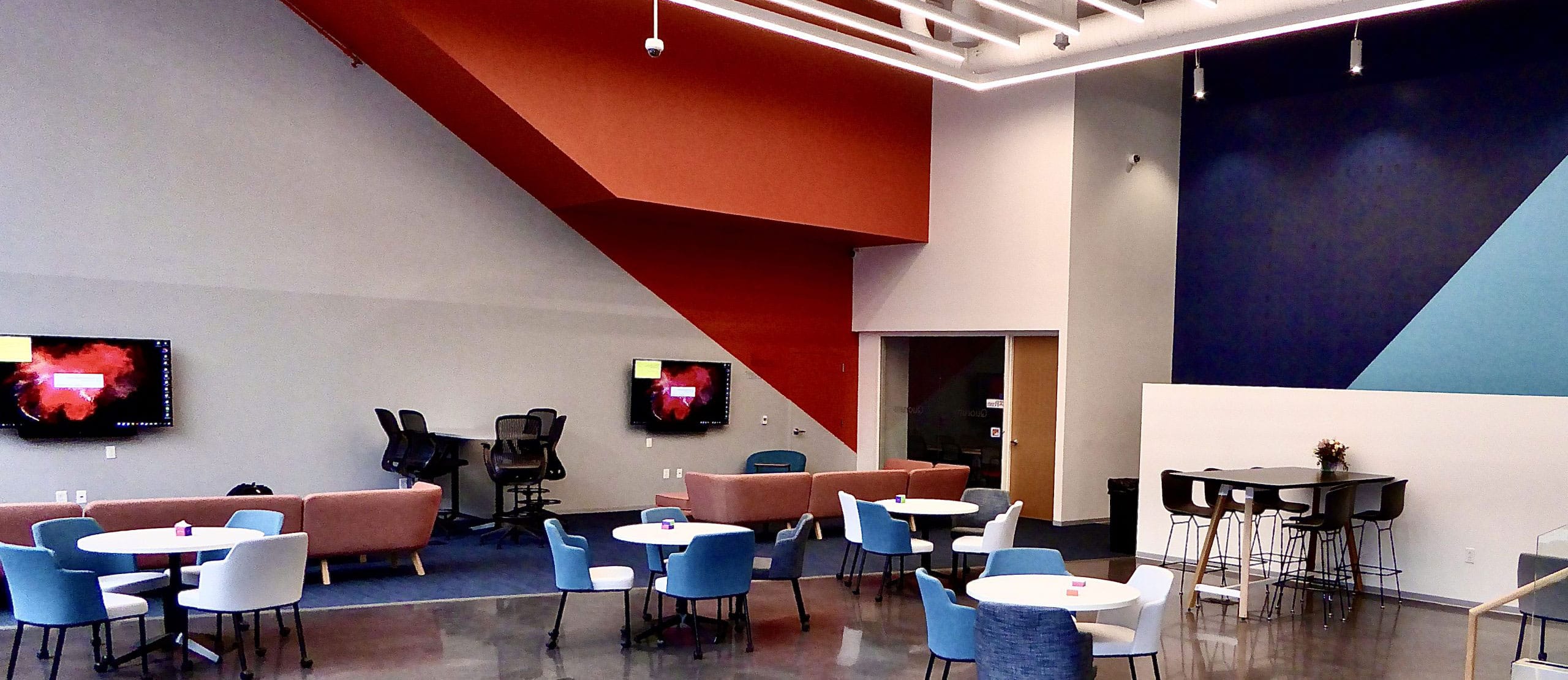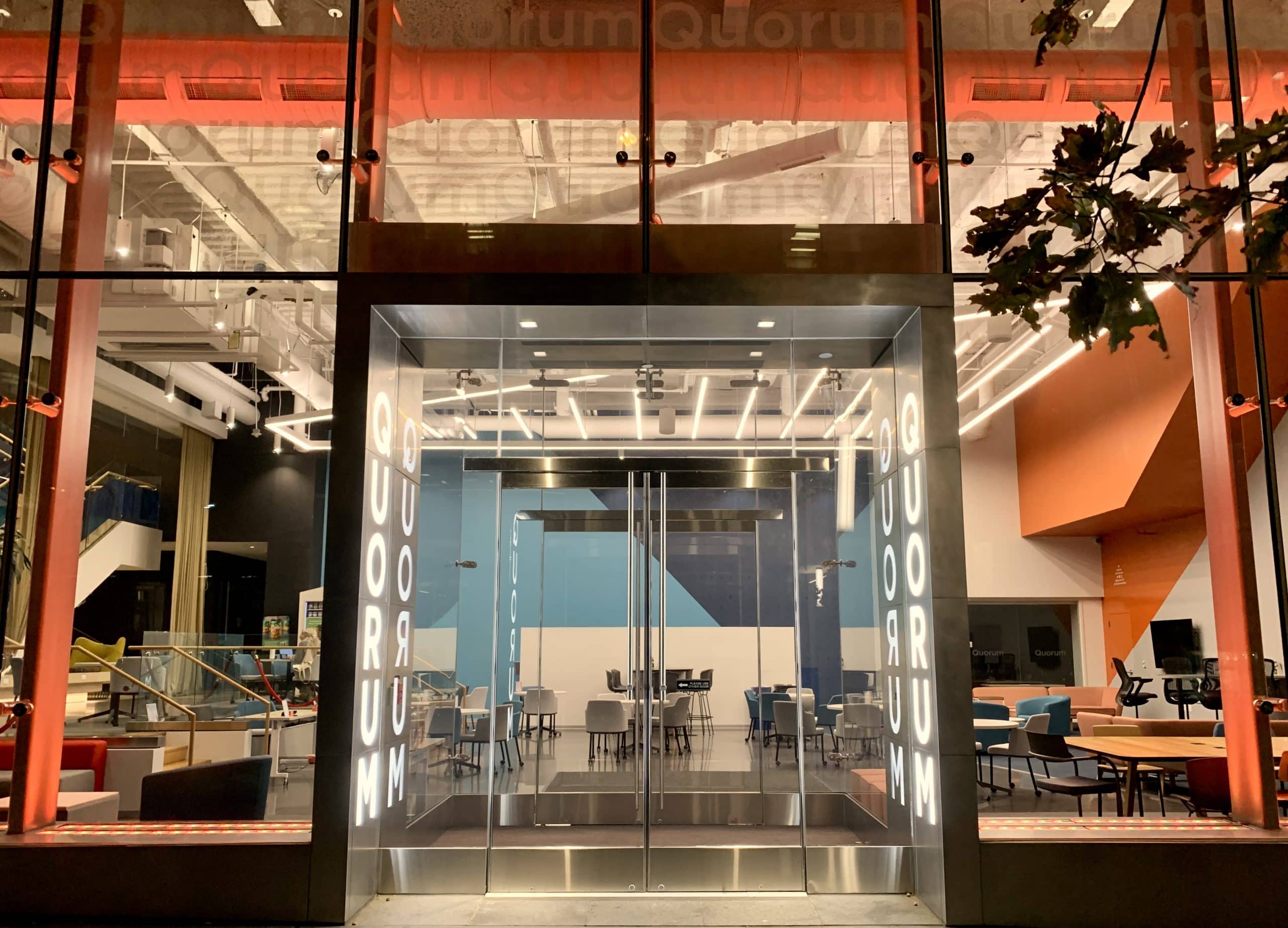Security in Schools
Standards of design for intrusion detection, video surveillance, and access control systems, as well as security glazing requirements better address intrusion situations. PSE designers have educational background, certification, and experience in network architecture and optical backbones to assure the millions of square feet of educational design will be supported for 20 years.
Technical staff perform security assessments, evaluating best-practice solutions; determining the best processes and adopting the technology most appropriate for each different school and setting. The most expensive or complicated solution is often not the best.
After the Sandy Hook Elementary School shooting, every lock and electronic controls manufacturer lobbied theirs as ‘the’ best solution. The teachers decided the simplest of locks with a red button – to show it’s ‘manually’ locked from the inside – was deemed best; after hundreds of hours of demonstrations to a recommendations panel of over 20 law enforcement, consultants, architects, superintendents, and state officials over a period of one year in a massive report.
How do we prevent school shootings and reduce its impact?
In 1980 there were no mass shootings in schools. Between 1970 and 2004 there was only one mass school shooting; at Texas A&M from their clock tower. This incident went on for 2 days. School shootings accounted for a total of 20 in 1980. Forty years later it’s over 10 times that; 250 school shootings in 2021.
With Congresses lifting of the assault rifle ban, the allowance of high-capacity magazines and bump-stock accessories, there were dozens of school shooting incidents for each year in the US.
The record bears this out
Countries with the Most School Shootings
(Total incidents Jan 2009-May 2018 – as reported by CNN)
- United States — 288
- Mexico — 8
- South Africa — 6
- Nigeria & Pakistan — 4
- Afghanistan — 3
- Brazil, Canada, France — 2
- Azerbaijan, China, Estonia, Germany, Greece, Hungary, Kenya, Russia, & Turkey — 1
There will never be a shooter de-activation system. We need to plan.
Security practices and principles apply to all protected premises – even public schools. Proactive operations and policies provide the structural basis for defending our children and teaching staff. Active control of ingress, egress, and classrooms continue to be the most beneficial defensive counter to dangerous incidents
Here are recommendations for school safety;
- Reduction of free flow and travel independently should not be compromised by systems but enhanced by layered defensive approaches.
- Active interception and physical obstacles have proven evidence-based benefits.
- Auxiliary communications networks identify threats and challenges, improving safety – from ‘mouth-to-ear’ to mobile devices – all supported by public safety
- Testing, mock exercises, and drills all promote diligence by enabling staff and students into defensive postures – preparing for changing weather conditions; hurricane winds, ice storm, flooding, fire, or tornado.
Design/Build Schools – Building the Program
Using planning sessions with educational specifications and educational technology specifications, the authority, with the district and designer can efficiently design the school with the builder to meet the estimate predicated upon its design.
Educational specifications are utilized with the school district to elicit input on specific educational program needs both in general and on a room-by-room basis. This provides the builder and architect with a method to produce drawings faster because of prototyping.
Prototyping is comprised of the following standardized component elements:
- Instructional Component – Classrooms, Science Classrooms/Labs, and Instructional & Administrative Support Areas
- Large Group Component –Specialized Instructional Areas (Art, Music, Technology), Physical Education, Dining, and Assembly Areas (Includes Cafetorium or Multi-Purpose Options)
- Core Component – Main Office, Nurse, Student Services, and Media Center
- Pre-Kindergarten Component – Pre-Kindergarten Classrooms and Support Spaces
Sustainable Schools
High performance school facilities should be efficient, easy to maintain and operate, and function as effective learning environments both now, and in the future. The following initiatives to ensure that every school facility project achieves these goals:
- Collaborative Planning and Design Process
- Design Standards
- LEED Certification
- Commissioning
- Post-Occupancy Evaluations
Taxes
Loss of educational funding in certain states will reduce US competitiveness and income. The US ranks 30th in math, 8th in reading and many states are curbing educational funding.
In Pennsylvania the corporate tax rate is being reduced from almost 10%, to half of that. This will leave $2 billion per year liability by 2031 on top of the $4 billion per year tax cuts, corporations have received over the last 15 years. Where will this be made up for PA schools?
In February a state judge ruled the Pennsylvania states school financing plan is unconstitutional, and it’s not for more money. It is time for equitable distribution of funding. Arkansas, Florida, and Iowa are all challenging school funding and their legislatures.
Central High School construction programs, in the heart of working Philadelphia, subsides on Alumni Association grants totaling over $15 million; but only if they can accumulate the donations. This is completely converse to New Jersey’s state legislative prerogative for educational funding.
But big schools with bigger returns on investments do not apply to the rural education system. Technology applies.
The ability to have technology resources available at the edge, where rural communities are often 50 or 100 miles away or more from larger institutions, can form a neural web with distance-learning; even one on one learning. This creates a consortium ability of smaller communities with less resources while enrobing the financial and technological capabilities that are now available through state funding. This is especially applicable to indigenous American reservations.
Rural education has always had a deficit. It’s time we ‘electrify rural America’ with technology that is available today – in practically unlimited quantities and practically wherever you reside – upending physical or mental constraints.
Saying we can’t afford to invest in early child development
means we’re storing up bigger costs in the future.
Michael Marmot
References
1. Quotations
https://www.azquotes.com/about.html
“We like to read quotes that can inspire and teach us.” AZquotes c2022
2. https://worldpopulationreview.com/country-rankings/school-shootings-by-country
3. https://www.njsda.gov
4. https://www.njsda.gov/ProjectSchoolDetails/SchoolGrantDetails?vProjectID=31-3970-x03&vSchoolDistrict=Passaic%20City
5. https://www.njsda.gov/ProjectSchoolDetails/SchoolGrantDetails?vProjectID=23-4090-N03&vSchoolDistrict=Perth%20Amboy
6. Personal discussion With Assistant Secretary Trish Shupple of Maryland Department of Corrections in 1992 regarding offsetting cost of justice system with educational funding.
7. Hudson County photos courtesy ;c2018 Jeffrey Totaro
8. From edlawcenter.org






